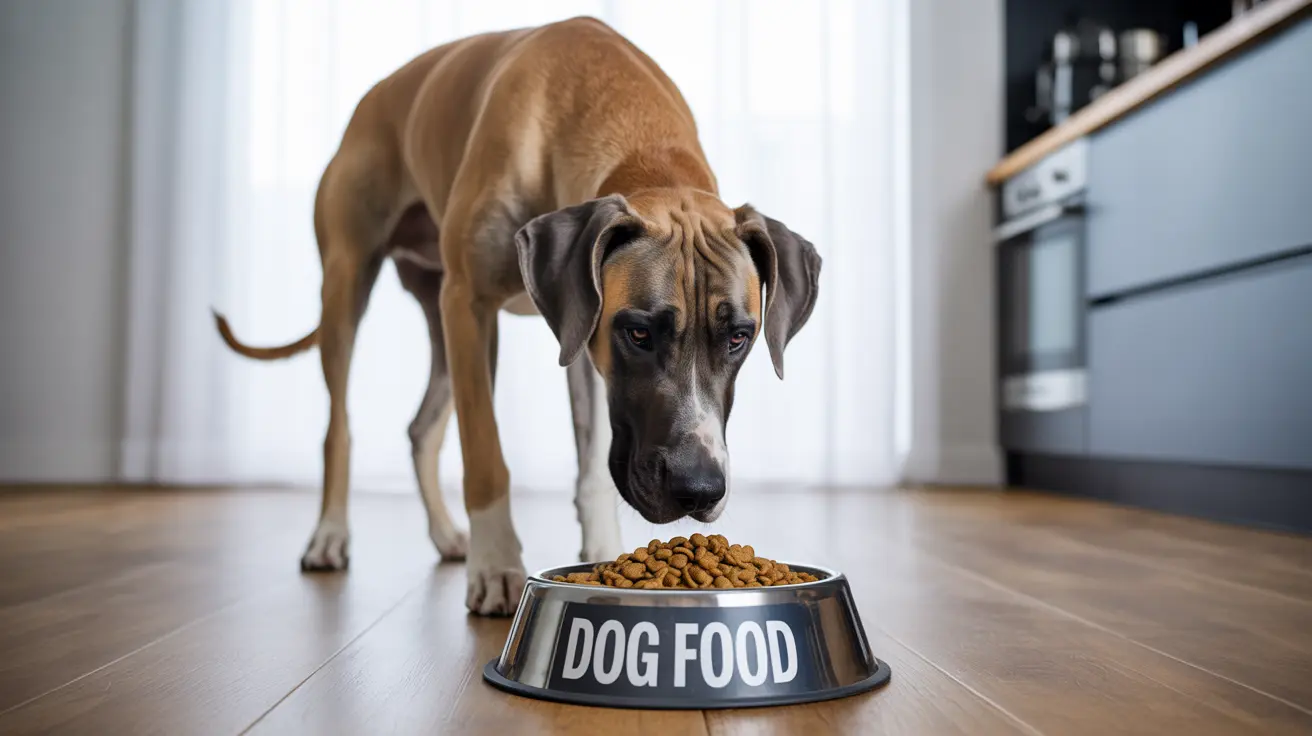Understanding Great Dane Nutritional Needs
Great Danes require significantly more calories than smaller breeds due to their massive size. An adult male Great Dane typically needs about 2,500 kilocalories daily to maintain a healthy weight. This translates to approximately 8-10 cups of high-quality dog food per day, while females usually require 6-8 cups daily.
The exact amount depends on several factors including:
- Age and life stage
- Activity level
- Overall health condition
- Whether the dog is spayed/neutered
- Quality and caloric density of the food
Comprehensive Great Dane Feeding Chart
Puppy Stage (2-12 months)
- 8-11 weeks: 3-4 cups daily (divided into 4 meals)
- 3-4 months: 4-6 cups daily (divided into 3 meals)
- 5-7 months: 6-8 cups daily (divided into 3 meals)
- 8-12 months: 7-9 cups daily (divided into 2-3 meals)
Adult Stage (1+ years)
- Adult Males: 8-10 cups daily (divided into 2 meals)
- Adult Females: 6-8 cups daily (divided into 2 meals)
- Active/Working Dogs: Add 1-2 cups to daily amount
- Pregnant/Nursing Females: Increase by 15-25% using puppy formula
Preventing Health Issues Through Proper Feeding
Great Danes are prone to several health issues that can be managed through proper feeding practices. Most critically, they're susceptible to bloat (gastric dilatation-volvulus), a potentially fatal condition that can be minimized through proper feeding schedules and techniques.
Key Feeding Guidelines
- Always divide daily food into at least two meals
- Use elevated food bowls to reduce neck strain
- Wait 60-90 minutes after meals before exercise
- Feed large-breed specific formulas
- Monitor weight and adjust portions accordingly
Special Considerations for Different Life Stages
Puppies
Great Dane puppies require specially formulated large-breed puppy food to prevent too-rapid growth, which can lead to skeletal problems. Never feed standard puppy food, as it may contain incorrect calcium-phosphorus ratios for giant breeds.
Adults
Adult Great Danes need consistent feeding schedules and portions to maintain their ideal weight. Excess weight can severely impact joint health, while underfeeding can lead to muscle loss and weakness.
Seniors
Older Great Danes may need reduced portions and special senior formulas to account for lower activity levels and changing metabolic needs.
Frequently Asked Questions
How many cups of food should I feed my adult Great Dane daily to maintain a healthy weight?
Adult male Great Danes typically need 8-10 cups of food daily, while females require 6-8 cups, divided into two meals. Adjust these amounts based on your dog's activity level and body condition.
What is the recommended feeding schedule for Great Dane puppies at different growth stages?
Feed puppies 3-4 times daily from 8-11 weeks, reducing to 3 meals daily from 3-7 months, and finally to 2 meals daily after 8 months. Follow the feeding chart above for specific amounts.
How can I prevent bloat in my Great Dane through proper feeding practices?
Prevent bloat by feeding multiple smaller meals daily, using elevated bowls, avoiding exercise around mealtimes, and never feeding one large meal per day.
When and how should I transition my Great Dane from puppy food to adult dog food?
Transition to adult food around 12-18 months of age, gradually mixing new food with puppy food over 7-10 days, increasing the proportion of adult food by 25% every few days.
How do pregnancy and lactation affect the feeding amounts and type of food for female Great Danes?
Pregnant and lactating females need 15-25% more food and should be switched to puppy formula during late pregnancy and throughout lactation to meet increased nutritional demands.
Remember that these guidelines are starting points, and individual dogs may need more or less food based on their specific circumstances. Regular monitoring of your Great Dane's weight and body condition, along with veterinary guidance, will help you maintain the optimal feeding routine for your gentle giant.






